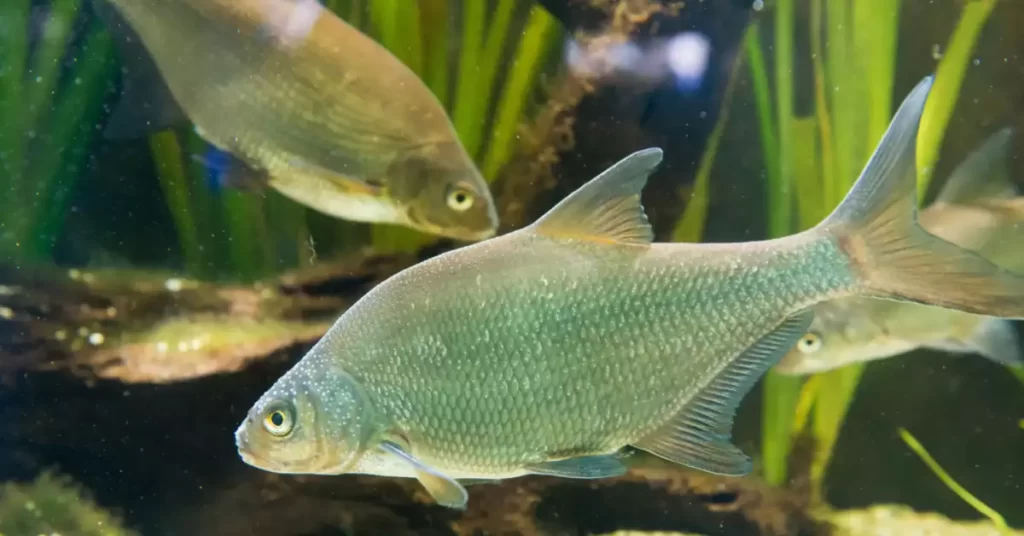As surprising as it may sound, fish can indeed contract herpes. In this article, we will explore the topic in detail, shedding light on the various aspects of fish herpes, including its causes, symptoms, treatment options, and preventive measures.
If you’re a fish enthusiast or simply curious about the subject, read on to learn more about this fascinating and essential topic.
Understanding Fish Herpes
Fish herpes, also known as Koi herpesvirus (KHV) or Cyprinid herpesvirus 3, is a highly contagious viral disease that primarily affects common carp and koi fish.
The virus is known for causing high mortality rates in infected populations, making it a significant concern for both fish farmers and hobbyists.
Causes of Fish Herpes
KHV is caused by a double-stranded DNA virus belonging to the family Alloherpesviridae.
The virus is waterborne and can spread through direct contact with infected fish, contaminated water, or contaminated equipment.
Fish can also become infected by consuming infected fish or parasites that have ingested the virus.
Identifying Symptoms
Infected fish may exhibit a range of symptoms, including:
- Lethargy and loss of appetite
- Excessive mucus production
- Sunken eyes
- Gill necrosis
- Skin lesions and ulcers
- Swollen abdomen due to fluid accumulation
It is important to note that not all infected fish will display symptoms, making it difficult to identify and control the spread of the disease.
Diagnosing Fish Herpes
To confirm the presence of KHV, a laboratory diagnosis is necessary. Veterinarians and fish health professionals may use various diagnostic methods such as PCR testing, virus isolation, or histopathology to identify the virus in infected fish.

Treatment Options
Unfortunately, there is no cure for KHV, and treatment options are limited. Supportive care, including improving water quality and reducing stress on infected fish, may help increase their chances of survival.
In severe outbreaks, it may be necessary to cull infected fish populations to prevent further spread of the virus.
Prevention and Control
Preventive measures are crucial in managing KHV outbreaks. Some steps to prevent the spread of the virus include:
- Quarantining new fish before introducing them to established populations
- Disinfecting nets, equipment, and tanks
- Maintaining optimal water quality
- Monitoring fish health regularly
- Implementing biosecurity measures on fish farms
Impact on Aquaculture Industry
KHV has significant economic implications for the aquaculture industry due to high mortality rates and reduced productivity.
The virus can lead to massive losses for fish farmers and suppliers, especially in areas with a high concentration of carp and koi farming.
Human Health Implications
There is no evidence to suggest that KHV poses a risk to human health. The virus is specific to fish, and there have been no reported cases of human infection.
Frequently Asked Questions (FAQs)
What is the survival rate of fish infected with KHV?
The survival rate varies depending on factors such as the fish’s age, overall health, and water quality. Mortality rates can be as high as 80-100% in some outbreaks.
Can KHV be transmitted to other species of fish?
KHV primarily affects common carp and koi, but it has also been reported in other cyprinid species, such as goldfish.
However, the virus does not seem to affect non-cyprinid fish species.
How can I disinfect my pond or aquarium after a KHV outbreak?
To disinfect a pond or aquarium after a KHV outbreak, remove all fish and drain the water.
Thoroughly clean and disinfect all surfaces, equipment, and filters with a suitable disinfectant, such as potassium permanganate or chlorine.
Allow the pond or aquarium to dry completely before refilling it with water and reintroducing fish.
Conclusion
In summary, fish herpes, or KHV, is a highly contagious and potentially devastating viral disease affecting primarily carp and koi fish.
While there is no cure for the virus, prevention, and control measures are crucial in managing outbreaks and minimizing the impact on fish populations.
By understanding the causes, symptoms, and implications of KHV, fish farmers, hobbyists, and industry professionals can take appropriate steps to protect their fish and maintain healthy aquatic environments.